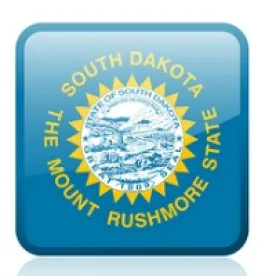Last year, South Dakota’s Congressional delegation successfully advanced federal legislation that will enable more than 100 Tribally Controlled Schools across the country to participate in the Federal Employee Health Benefits (FEHB) Program. The Office of Personnel Management (OPM) is working to get the word out, and we hope this short update will provide helpful background for newly eligible entities and other groups interested in efforts to expand Tribal eligibility under the FEHB Program.
According to the Congressional Research Service, the FEHB Program is the largest employer-sponsored health insurance program in the country, providing health care benefits to about 85 percent of federal government employees and 90 percent of federal retirees. Under the Program the federal government and the employee or retiree share the cost of health insurance, with the federal government generally contributing 72% of the weighted average premium of all plans but no more than 75% of any given plan’s premium. OPM administers the program.
Many Tribal employers have been eligible to participate in the FEHB Program since 2012. The Patient Protection and Affordable Care Act (Pub. L. 111–148), enacted in 2010, established that an Indian tribe or Tribal organization carrying out programs under the Indian Self-Determination and Education Assistance Act (ISDEAA), or an urban Indian organization carrying out programs under title V of the Indian Health Care Improvement Act, could participate in the FEHB Program.
In 2011 and 2012, OPM completed consultations with Indian tribes and other stakeholders on the new program and, in May of 2012, Tribal employers began purchasing FEHB coverage, rights, and benefits for their employees. Under the Program for Tribal employers, the Tribal employer is required to pay at least the government’s share of the premium, and the enrollee pays the remaining share. Tribal employers are allowed to purchase coverage only for employees and their dependents, and coverage is not available to retirees.
The “Tribal School Federal Insurance Parity Act,” introduced in the 115th Congress, focused on extending FEHB Program benefits to employees of Tribally Controlled Schools. Tribally Controlled Schools are generally defined as K-12 schools that 1) are operated by Indian tribes or tribal organizations, 2) do not qualify as a local educational agency, and 3) are not directly administered by the Bureau of Indian Affairs (BIA). According to the Bureau of Indian Education (BIE), the BIA funds 183 schools serving Native Americans located on 64 reservations in 23 states. Of these schools, 57 are managed directly by the BIE and already participate in the FEHB Program, and 126 are Tribally Controlled Schools and do not. Prior to the enactment of the Tribal School Federal Insurance Parity Act, even BIE “contract” schools (operated by Indian Tribes through the ISDEAA) were ineligible to participate in the FEHB Program without a change to the statute.
Congresswoman Kristi Noem (R-SD) in the U.S. House of Representatives and Senators John Thune (R-SD) and Mike Rounds (R-SD) in the U.S. Senate sponsored the Tribal School Federal Insurance Parity Act in the 115th Congress. Congressman Dusty Johnson (R-SD-At Large) joined the two senators to reintroduce the legislation again in the 116th Congress.
By the end of the 116th Congress, the South Dakota delegation had recruited a remarkably bipartisan coalition of cosponsors, including Congresswoman Deb Haaland (D-NM). The legislation also received support from the National Congress of American Indians, the National Indian Health Board, the National Indian Education Association, the All Pueblo Council of Governors, the Great Plains Chairmen’s Health Board, the United Tribes of North Dakota, and the Saint Stephens Indian School Educational Association, among others.
On May 1, 2019, the Senate Committee on Indian Affairs held a legislative hearing on the Tribal School Federal Insurance Parity Act, at which John Tahsuda III, Principal Deputy Assistant Secretary—Indian Affairs, U.S. Department of the Interior, and Cecelia Firethunder, President, Oglala Lakota Nation Education Coalition, testified in support of the bill. Deputy Assistant Secretary Tahsuda reported that the participation of BIE schools in the FEHB program had reduced costs and aided in school recruitment and retention. Ms. Firethunder estimated that access to FEHB would save a single BIE grant school on the Pine Ridge Reservation, the Little Wound School, $1,000,000 per year. The Committee on Indian Affairs reported the bill to the full Senate in July 2019, and the legislation was ultimately enacted at the end of 2020, in section 1114 of the Consolidated Appropriations Act, 2021 (Pub. L. No. 116-260).
In April of 2021, OPM held a government-to-government consultation that, among other things, covered OPM’s work with Tribes to enroll Tribal employees in the FEHB Program. During that consultation, OPM noted that Tribally Controlled Schools are now eligible to purchase coverage for their employees, and OPM has since formally initiated the application process.




 />i
/>i

